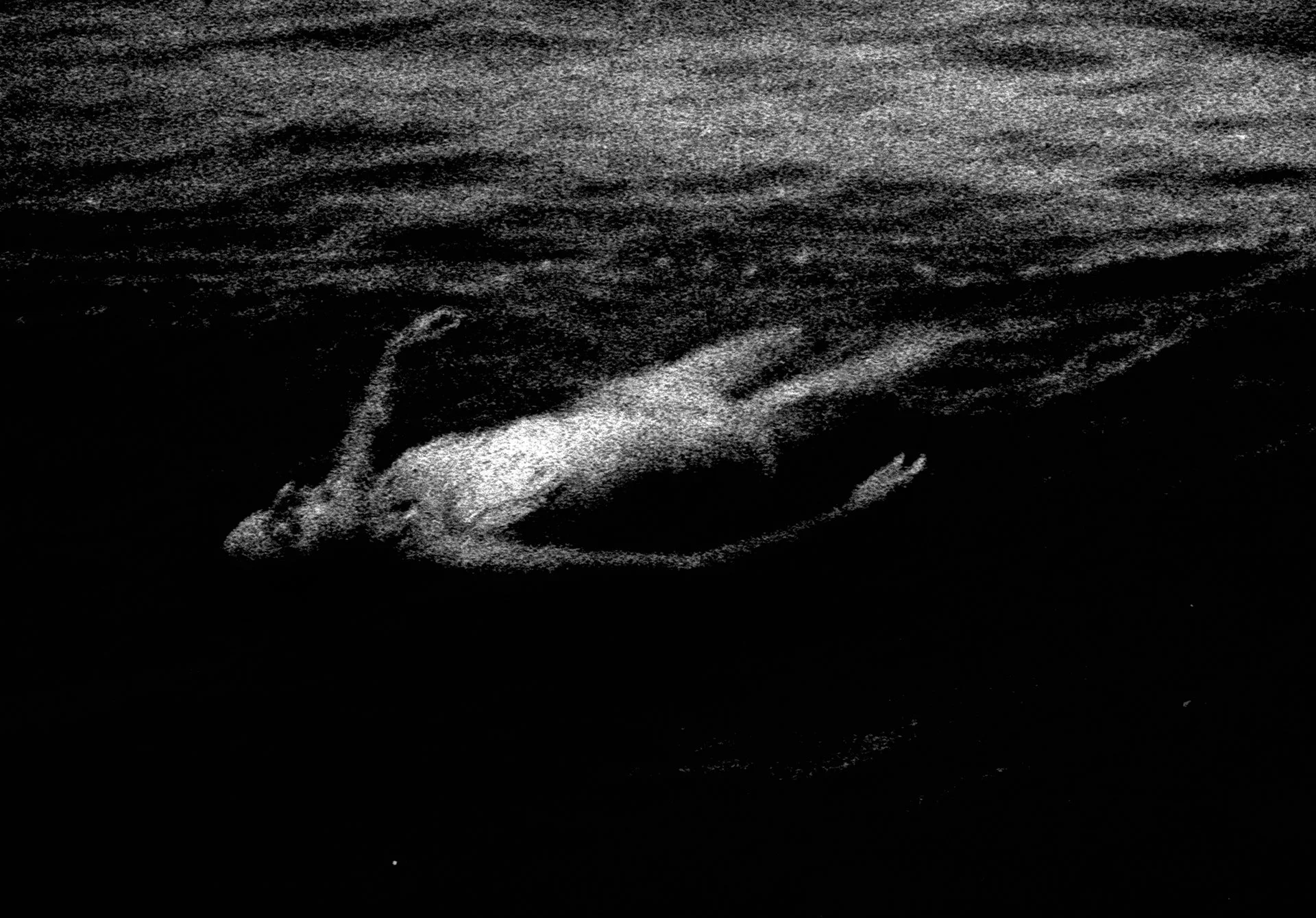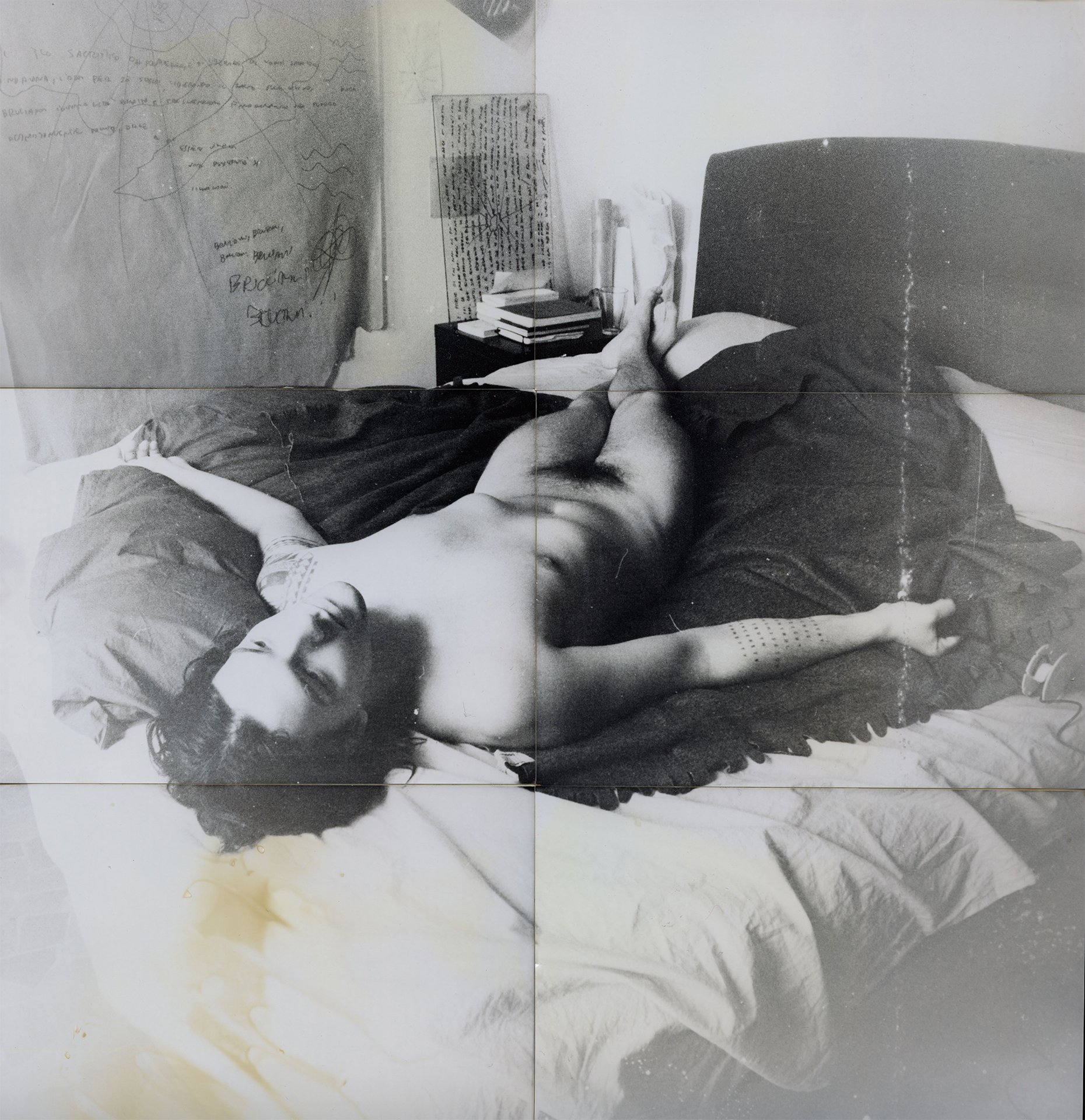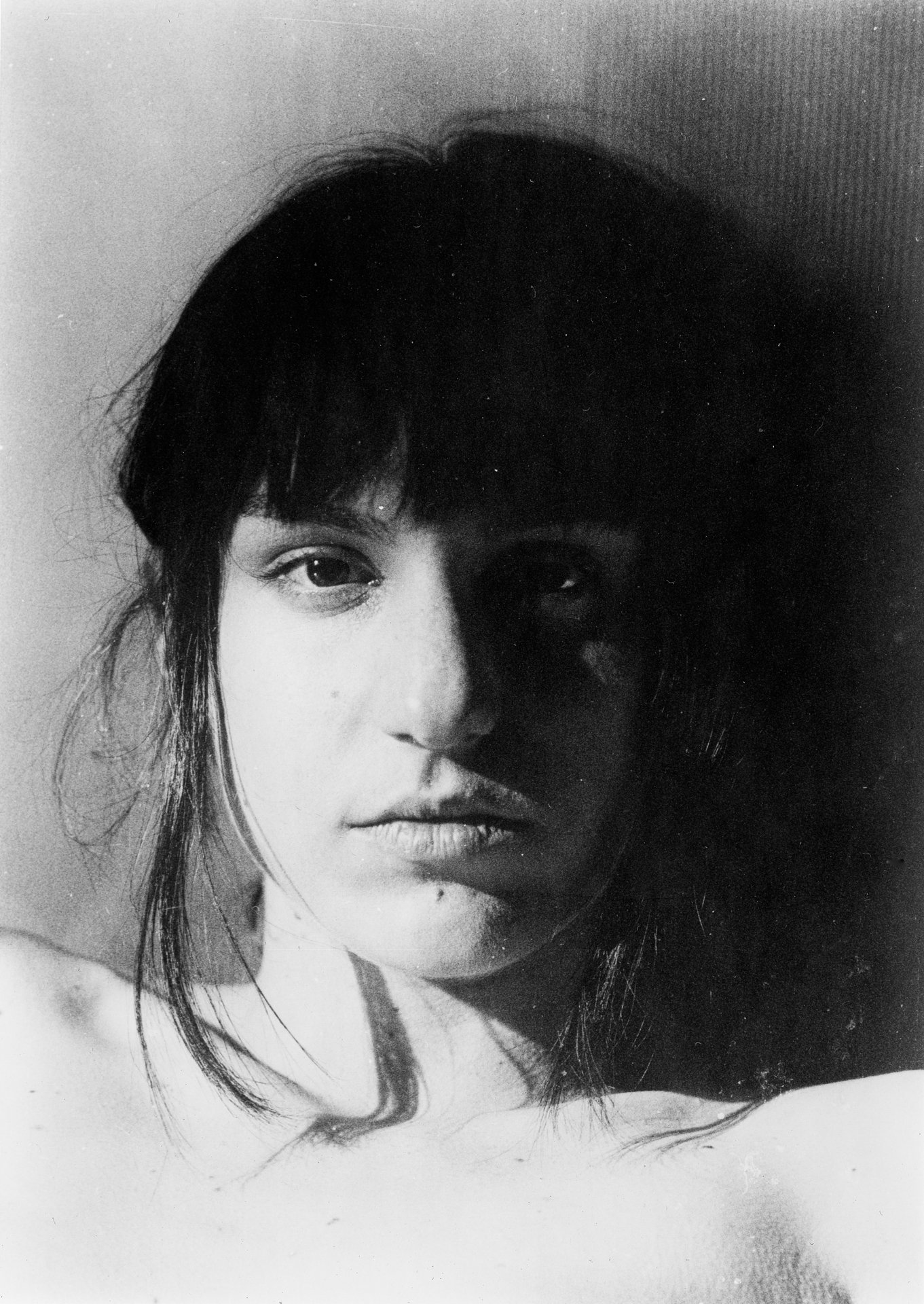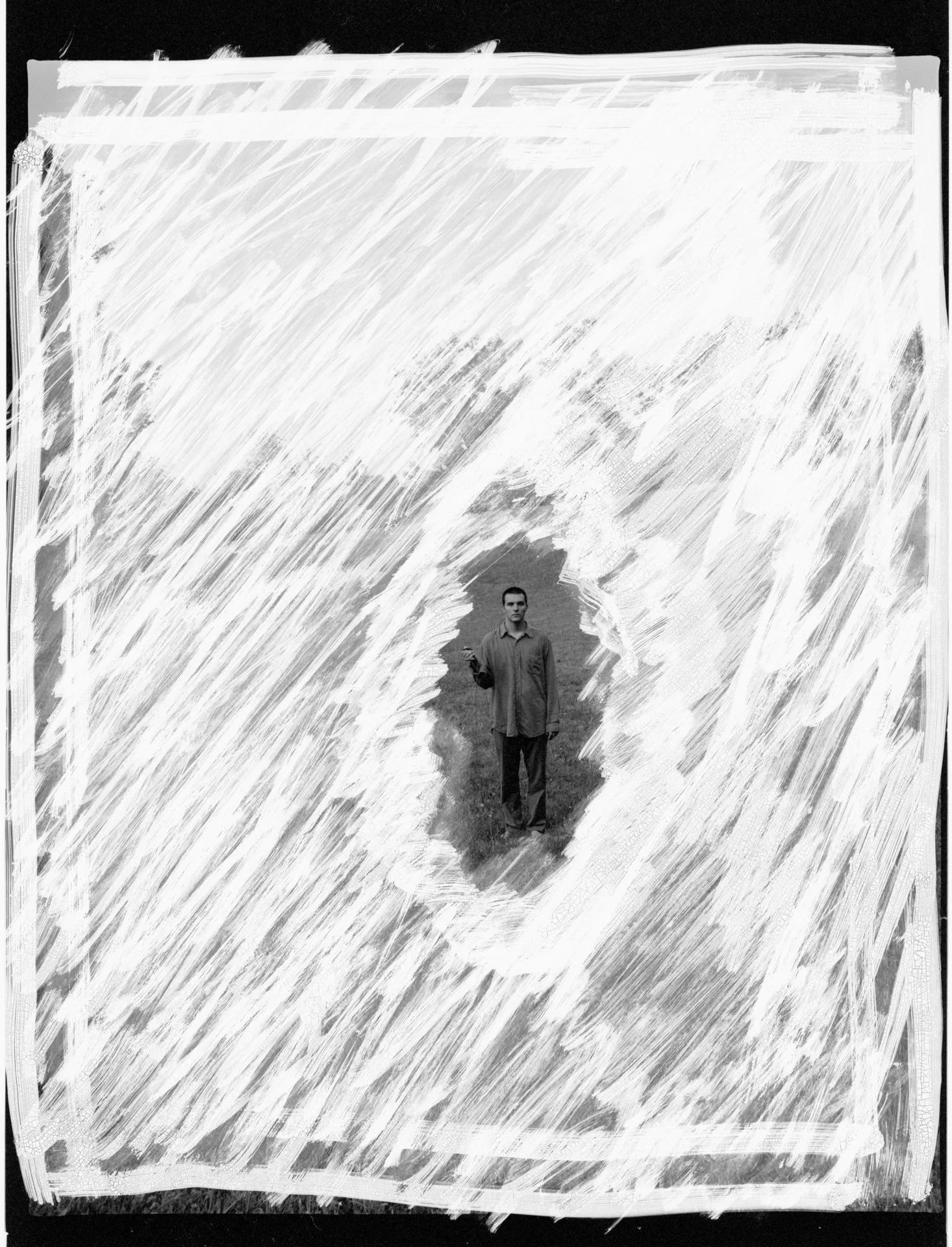INTERVIEW WITH ALEXANDER PAPADOPOULOS
Author GABRIELA GAWĘDA
Artist ALEXANDER PAPADOPOULOS
Website alexanderisak.net
Instagram @iskander.00001
Alexander Dimitrios Papadopoulos (1996) had developed a practice that is rooted in the search for the origin. His dual citizenship, Greek and Italian, has informed his artistic research that is caught between eastern and western values, images, impressions. Both the mundane and the sacred are present in his works, be they filmic, photographic or mixed-media productions. Papadopoulos graduated with a Bachelor’s degree in New Technology of Arts at the Academy of Fine Arts of Venice in 2021, and in the same year has delivered his latest short film titled The Black Sun, accepted in the selection of Short Film Corner at Festival de Cannes. The film revolves around the concept of the end – the end of mankind as we know it, the end of the world, the end of a relationship. Endings as the conclusion and beginning of a new cycle, both deadly and generative, as a process of acceptance that provides us a chance to be born again with new flesh and a wiser conscience.
This is a recurring theme in Papadopoulos’s work that can be found also in the film Icaro I (2019), shot in the Netherlands while researching at the NHL Hogeschool, and further developed with the performance Viaggio verso il centro del sole (2020), a sound interpretation of the Greek myth of Icaro that in this work develops a different, somehow modern conscience and understanding of his fate: in our modern times where every step we take is a step towards burning ourselves, accepting our fate is the only way to transcend it. Icaro can only lose himself and be one with light is.
How do you approach the process of post-production? Do you prefer to edit the images which depict more intimate scenes or to leave them to express the authentic rawness of the moment?
My process regarding editing and post-production is somewhat complicated. As far as my photographic work is concerned, the post production process is almost always absent, I find that my way of approaching photography is as direct as possible, where every possible form of interaction is given only thanks to the analogue process, in the dark room, where I have the organic permission of light and chemistry that collect almost all of my visual and conceptual alteration process, in order to allow as much as possible the singular moment enclosed in that layer to express itself, transship or lose itself, to my eyes and to those of all.
In the same way I treat digital files, raising and ruining the enclosed data as much as the rolls I push during development, almost trying to squeeze and see what is enclosed in that set of variations of shadows and highlights.
2. Did you choose your images for Fresh Eyes 2022 based on a specific memory or a story which you wanted to tell through them?
The selection contained my most significant shots of the last two years, initially concerning the self-portrait, as a form of visual and photographic integration in the surrounding context, developing in the search for the female figure, and concluding with that of the mother figure. Obviously, since this was a selection for an open call, I knew that there would be a further process of cleaning the material, so I opted for a more varied selection that could still respect my most recent dialectic, starting from the roots to get to the branches, always reflecting a very raw and intimate approach.
3. Is there a reason why for Fresh Eyes and your independent projects you mostly opted for black and white imagery?
Color is a very complex material, difficult to shape, which reflects life in its infinite shades. I personally find black and white as a form of extreme idealization, an unreal, mythologized translation of what I feel and live. However, since it is an interpretative and at the same time narrative form, art itself is in the end, my approach is a sort of singular research of what for me really has its own light, dividing and detaching reality itself in the its simplest components. Inevitably I am approaching a consumption of this ideal, increasingly hungry and necessary for other shades, impossible, of memories that violently demand a wider spectrum, which I enormously hope to have the vision and the strength to shape and recreate in their form. original. Despite everything in recent years my practice has undergone a tendency to sepia, yellow, the warm color of the sun and the warmth of the soft, so I have good expectations regarding this next step.
4. In our e-mail conversation you mentioned the image of a girl lying on a bed with her gaze turned upwards relates to a theme of walking. How do you connect her motionless pose to the vitality of Venice?
That photo is actually of me, engaged in the form of a self-timer and covering my private parts to represent a sort of transformation, of transfusion and loss of the boundary of my form and of the one I was looking for through that project.The theme was fundamentally the journey as an act of research, vision, contamination and action. The way in which I had decided to integrate it was a reinterpretation of places I had visited with a person very dear to me at the time, which I had inevitably personified with the very idea of the city, especially thanks to readings such as "The invisible cities" by Italo Calvin. So I found myself revisiting and archiving these places, full of memories, in my meditative and cathartic act, walking and sequencing them, ending with two distinct shots.
She lying on her stomach in a bed (the photo is not present here in the selection I sent) and a photo of me on her stomach. Removing sexuality from the photo and placing myself as opposed to its ideal, I thus conceived that photo, as white is to black, the two photos are twins of themselves, asleep, detached, both embryonic and connected to the same mother, Venice, the city of absurd, conceived from the same idea of an impossible construction on pile-dwellings and constantly under maintenance and at the same time aware of its own decline and inevitable end, given the trend of climate warming and common circumstances.
5. Are you using photography to gain a deeper understanding of yourself or rather the changing world around us?
My way of using photography is an attempt at the same time obsessive and vain, a kind of study that inevitably requires a constant state of understanding and perdition.
The magic of photography is the very act of stopping time and giving it a different meaning, intimate or distant, cold or hot, but it is still a clear stance and awareness of the moment in which you shoot, in which there will no longer be a situation similar to that recorded. This philosophy is necessary for me given my poor visual memory, and at the same time dissociative, since the very act of photographing requires an exclusion from the moment in order to be able to maintain it, thus bringing the person from spectator to spectator, constantly. The way in which I place myself at this paradox is by maintaining an almost obsessive bond, dirty but not rudimentary, intimate, with the subject and with the way it is expressed in its support, thus becoming myself the means with which I record, creating a hybrid and organic substance albeit mechanical.
The medium, which has now become me, maintains a role that can both help me to be understood and that of understanding the circumstances close to me.
All this has a limit that I compensate with other formats, be they analog or digital, visual or not, freeing up this need so that the flow can allow a fluid course of sensations and emotions, as well as the right clarity to be able to, or not , translate them.





